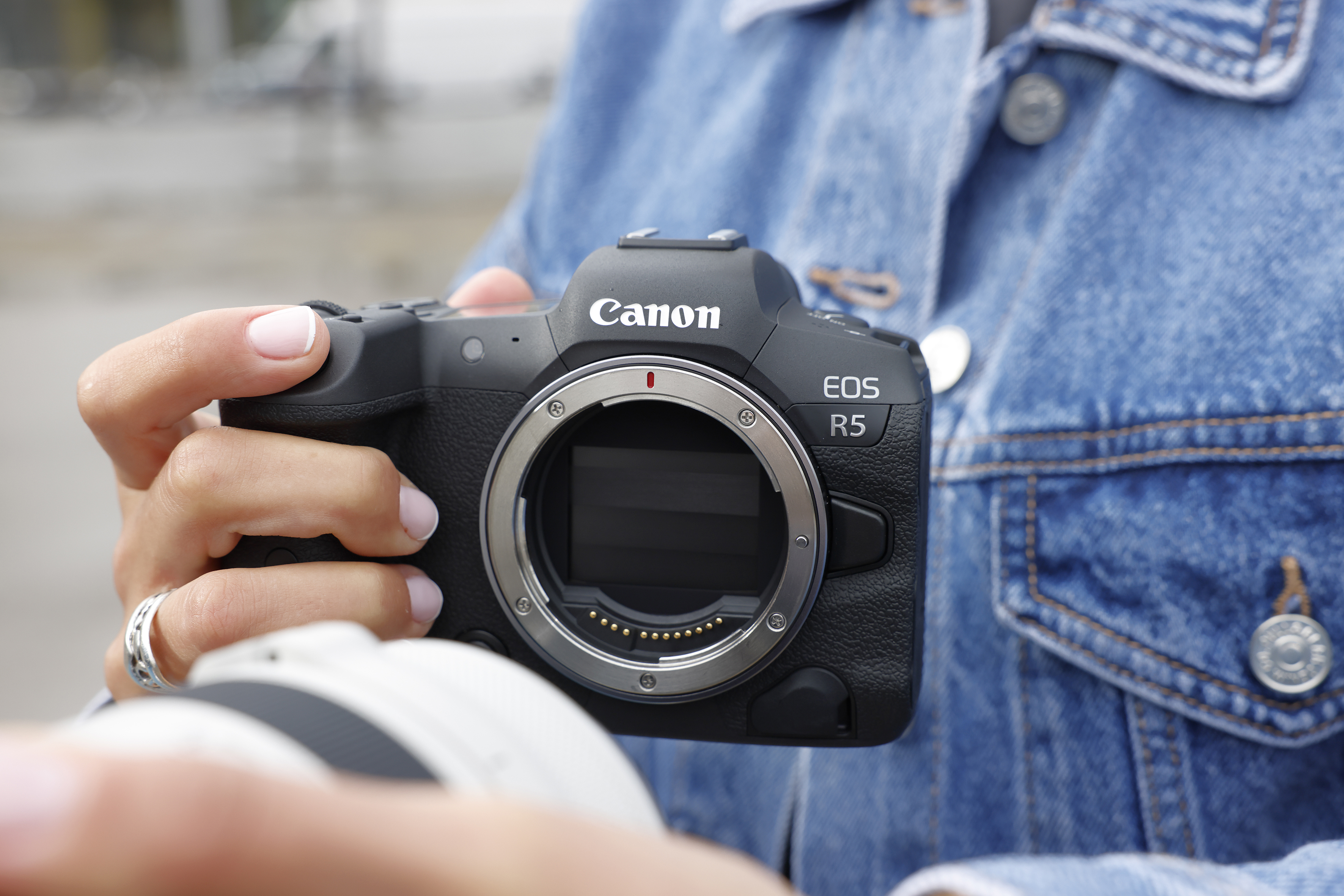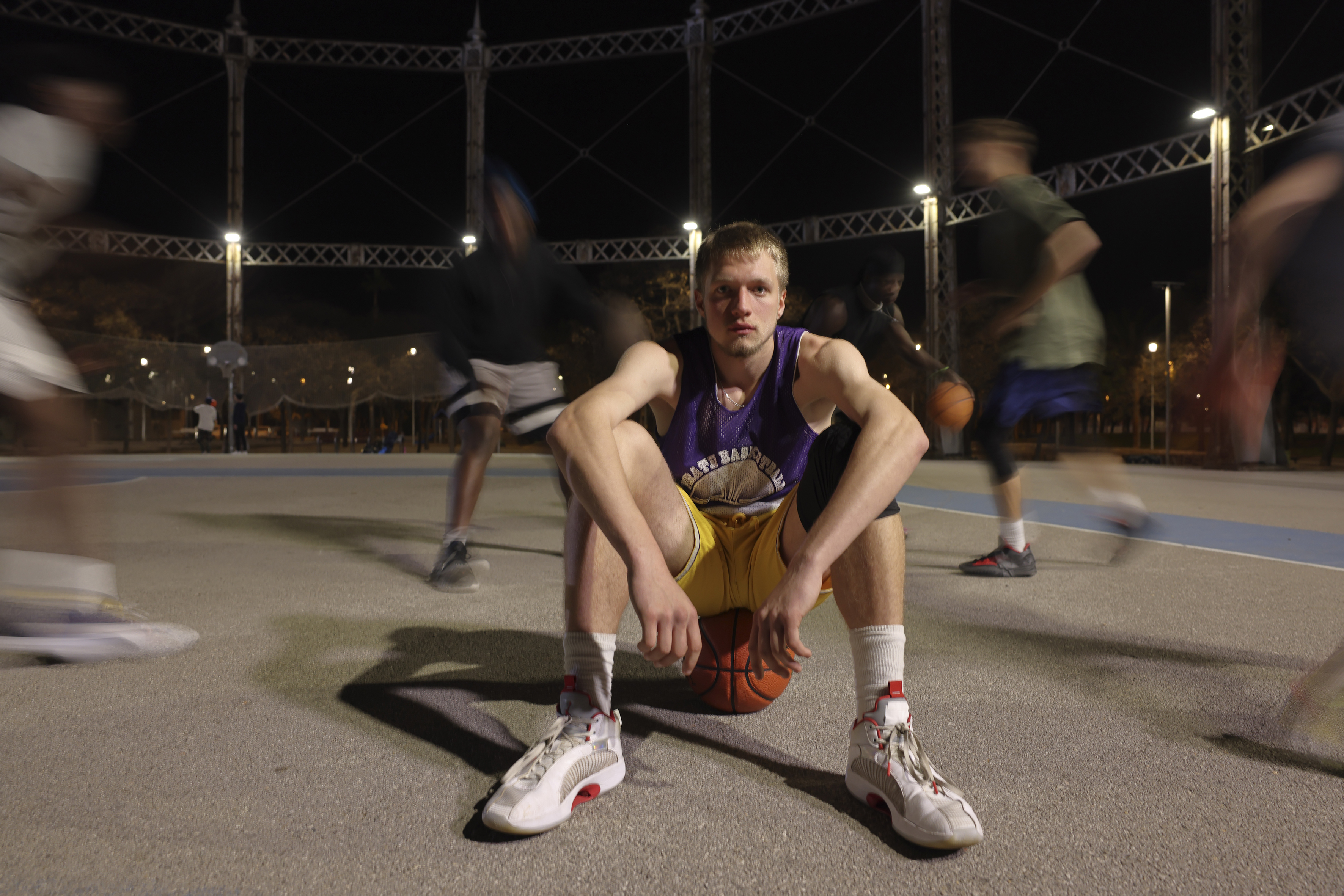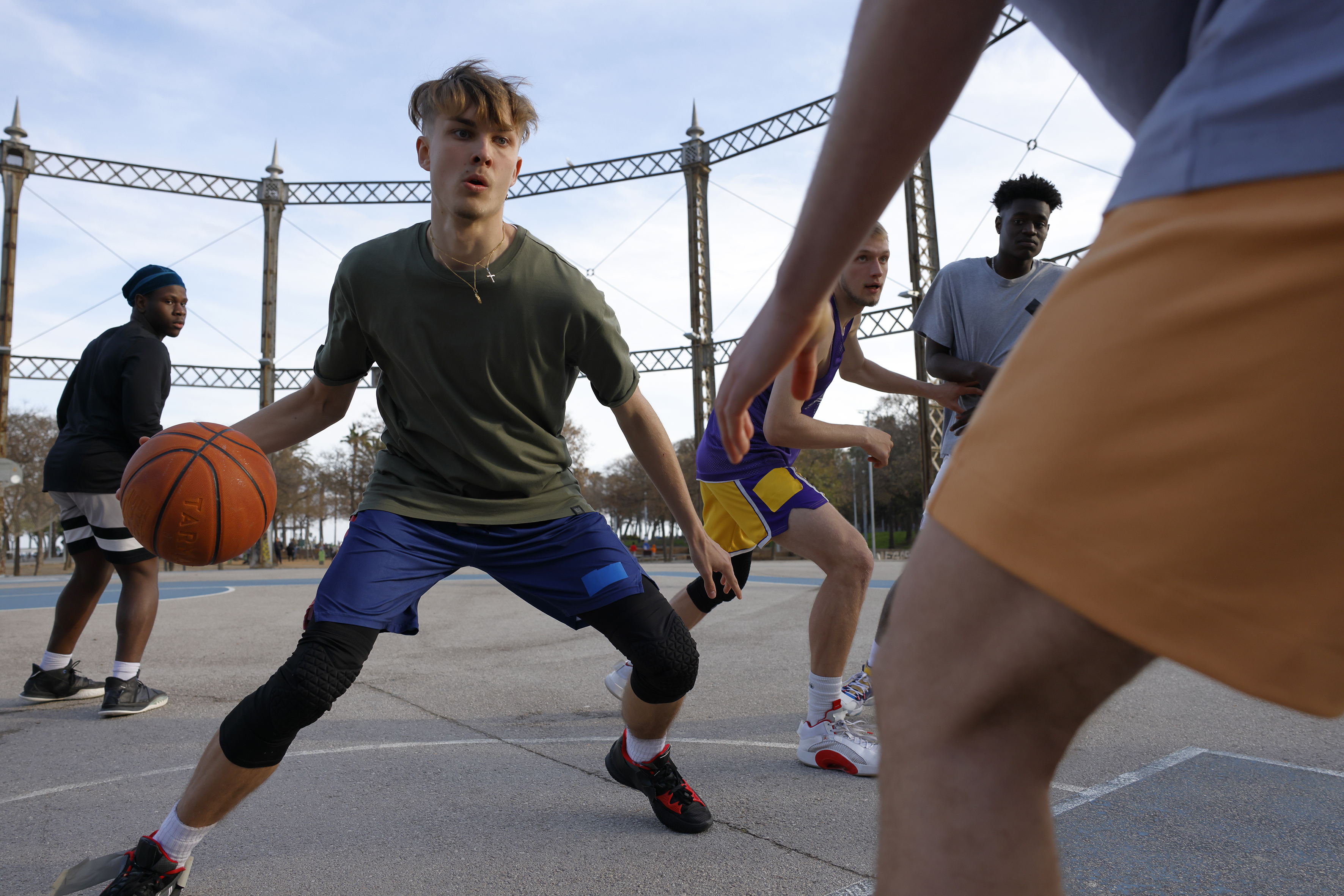Focus on your subject with Canon’s EOS R System

When shooting a new subject, you want to focus on getting the strongest set of images possible, rather than worrying about your kit.
When given the opportunity to capture a fast-paced streetball game in Barcelona, Spain, Raisa Abal turned to the Canon EOS R5 – an R System camera boasting the innovative RF mount, ergonomic handling, up to 8-stops of image stabilisation and excellent AF to boot.
RF mount and lens optics
The Canon EOS R5 has received top marks for its full-frame performance (we even named it Best Camera as part of the Future Tech Awards). However, many of the camera’s capabilities wouldn't be possible without the innovative RF mount – a key feature of the R System, which unlocked Canon’s ability to make smaller, lighter, faster and more intelligent cameras.
The RF mount design features more electronic contacts than the EF mount, allowing for richer communication between the lens and camera – and, in turn, brilliantly useful features such as the customisable control ring.
RF lenses might share the same wide 54mm diameter as Canon’s EF lenses, but the mirrorless design reduces the distance between the rear element of the lens and the focal plane of the camera sensor. This has enabled Canon engineers to create optics with larger apertures for a given focal length, while improving critical image sharpness from corner to corner.
Since launching in 2018, the number of RF lenses has grown rapidly from a family of four to 26 (and counting). The RF lens roadmap now features an enormous range of lenses for amateur and pro imagemakers, from trinity lenses such as the Canon RF 24-70mm F2.8L IS USM to mega-telephotos like the Canon RF 1200mm F8L IS USM.
Ergonomics

Because EOS R System cameras are designed to be smaller and lighter than their DSLR counterparts, they’re ideal for modern content creators like Raisa who want to shoot all day without a tripod. As a quick comparison, the EOS R5 weighs just 738g with a card and battery, while the Canon EOS 1D X Mark III tips the scales at 1.4kg.
The EOS R5 is more portable and comfortable for handheld shooting, but it’s still robust. The weather-resistant magnesium construction allows photographers to continue confidently in all conditions – maintaining creative flow even when the rain flows down.
Image stabilisation

Canon’s image stabilisation (IS) features are constantly evolving. Before the Canon EOS R5 was released, many Canon lenses were already equipped with an Optical Image Stabilizer to prevent camera shake during handheld shooting and deliver sharper shots.
But with the release of the EOS R5, we saw how the camera’s 5-axis In-body Image Stabilizer (IBIS) worked in tandem with compatible RF lenses to provide up to an impressive 8-stops of protection against camera shake. The technology means sharper stills and steadier video footage than ever before, whether you want to ditch the tripod or continue to shoot as the light levels drop.
Autofocus excellence

There are several different types of AF systems in cameras today, but Canon's Dual Pixel CMOS AF is arguably at the front of the pack for speed and performance. It's named as such because every single pixel on the camera’s sensor has two independent light-sensitive photodiodes, each capable of working together or individually.
By essentially comparing 'left' and 'right' images on each pixel to work out the correct focus, the AF found on Canon’s EOS R System is not only more accurate than DSLRs that use separate phase detection and contrast detection, but also fast and responsive for shooting video on mirrorless cameras such as the EOS R5.
For more about the Canon EOS R System, visit https://www.canon-europe.com/cameras/eos-r-system/
Get the Digital Camera World Newsletter
The best camera deals, reviews, product advice, and unmissable photography news, direct to your inbox!
Digital Camera World is one of the leading authorities on camera and photography news, reviews, techniques, tutorials, comparisons, deals and industry analysis. The site doesn't just specialize in cameras, but all aspects of photography, videography and imaging – including camera phones, gimbals, lenses, lighting, editing software, filters, tripods, laptops, printers, photo books, desks, binoculars and more.
Whether you're using, looking to buy or trying to get the most out of a compact camera, action camera, camera drone, cinema camera, beginner camera or professional camera, Digital Camera World has a roster of experts with combined experience of over 100 years when it comes to cameras, photography and imaging.

